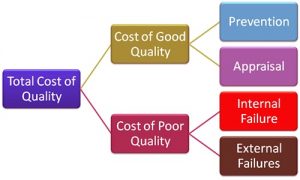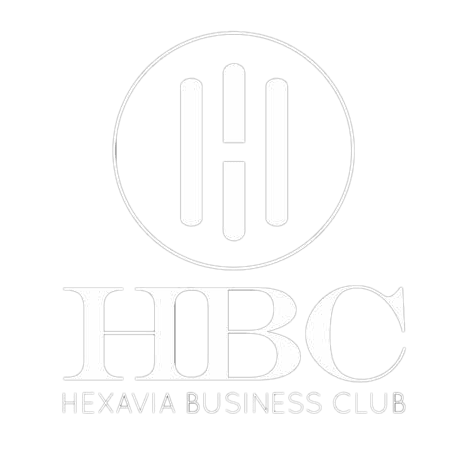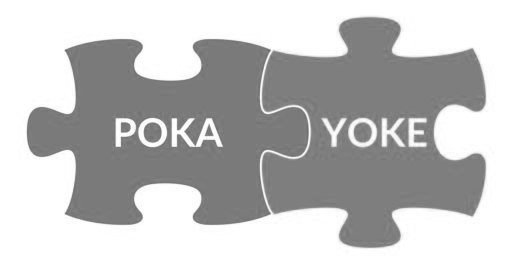In Management, Poka-Yoke is the act of error proofing a process through great design to prevent error from its use. Most mistakes in the workplace, most errors in production or customer dissatisfaction shouldn’t have happened in the first place, if there was Poka Yoka in their design and delivery process. Take for example; most elevators are equipped with sensors that prevent the doors from closing if there is something or somebody in the way. They also beep and refuse to run if they exceed the weight limit. This prevents accidents. It’s cheaper to deliver prevention than cure- or to appraise than cure.
Growing up, in my household, we all loved to go to school but disliked going to church at that time (maybe because of the type of church my parents attended). So, my parents imposed a rule, if you didn’t go to church on a Sunday, all of your school uniforms would be soaked the morning after. This meant that you wouldn’t be going to school that Monday. This prevented us from staying away from church. This saved my curious mind from atheism. That’s Poka Yoka!
A spell check function is on your word editor software and now also on your phone. These days, your Gmail won’t send right away after you click “send” if the body of your email says, “find attached” but there is no attachment of a document. Rather it prompts you. Both the spell check and that Gmail feature are put there to prevent you from sounding dumb and unprofessional too. Poka Yoka actually means “fool proofing’ in Japanese. The question is, how are you helping your team or even customers from being foolish around your brand?
We all know a travel mug or children’s water bottles that the user is required to press and hold a button in order to drink from them. The producer put this mechanism there as it prevents the contents from leaking or spilling out when the user is not drinking from the container. All these are inbuilt functions in the system to prevent failure or misuse. What’s yours?

There are three quality costs (prevention cost, appraisal cost and failure cost). Their degree of cost to an organization is also in that rising order. So it is wise to prevent and appraise than to rework or lose credibility if your product, people or brand lose credibility in the eyes of the customer. In other words if you don’t have time or money to do it well, then you’d need more money to apologize and even do it again. The smart alternative to rework is to ensure it doesn’t even fail the first time by making it failure proof. It is less costly. But, yes, all forms of quality management. But that of poor quality is costlier.

Phil Crosby popularized the concept of the cost of poor quality, advocated prevention over inspection and “zero defects,” and defined quality as conformance to specification (project produces what it was created to produce). Defining requirements or ensuring continuous flow is good but not strictly part of error proofing. Coined in the 1960s in Japan, Poka Yoka means “Fool- Proofing”. It is a tool used to avoid inadvertent errors. The main premise of the tool is to ensure that proper conditions are placed for every process step such that there is no room for the occurrence of defects while executing. In other cases, it serves as a detector and it helps to eliminate the defects as early as possible. Poka Yoke is a vital tool in lean and excellent manufacturing since it helps the people and work processes work in the right fashion for the very first time. It helps to eliminate defects out of the processes and the products. Furthermore, it improves the quality and reliability of outputs. It is worthy to note that it does mitigate both the mechanical as well as human errors from the work processes and products.
To deliver on the culture of Poka Yoke, consider these concepts:
- Benchmarking, Mentorship and Evaluation: One important part of operational excellence is your habit of being open-minded to feedback, new ideas and willingness to learn from the best. Never let a crisis go to waste. Find out why it happened and get to the bottom of it by incrementally asking why. Also, what you are going through, some brands have passed through and are better. Find out how by benchmarking against them. Benchmark against the best. Most innovation will come outside of your organization. Benchmarking yourself to a competitor, or to popular businesses outside of your sector, helps you gain insights that allow you to evolve your strategy. Comparing and benchmarking your efforts to the best helps you identify efficient practices, understand your level and possible weaknesses of your current position.
- Quality Tracking by the 7 Quality Tools: How do you gauge how well you are doing? What’s your “performeter”? Essentially, it is pertinent to track performance and quality in business; this will keep business operations and performance levels afloat. With humans, it’s easier through MPRs. But how about products and production processes?
The seven quality tools to compare and track quality are: Flow chart, Histogram, Cause-and-effect diagram, Check sheet, Scatter diagram, Control charts, and Pareto charts. Basically, we would look out a few of these quality tools. Flow charts are one of the best process improvement tools you can use to analyze a series of events. Flow charts help you define the processes through a sequential flow. It maps out these events to illustrate a complex process in order to find any commonalities among the events. A histogram is another quality tool, it is a chart with different columns. These columns represent the distribution by the mean. If the histogram is normal then the graph will have a bell-shaped curve (The bell curve or standard deviation curve is used to visualize the spread of data. The standard deviation tells how much the data is clustered around the mean of the data. Lower standard deviation tells that the data is less spread and higher standard deviation tells that data is more spread). If it is abnormal, it can take different shapes based on the condition of the distribution. Histograms are used to measure one thing against another and should always have a minimum of two variables. Cause-and-effect diagrams can be used to understand the root causes of business problems. Because businesses face problems daily, it is necessary to understand the root of the problem so you can solve it effectively.

Another very simple yet effective quality tool is the Check sheet. A check sheet is a basic tool that gathers and organizes data to evaluate quality. This can be done with an Excel spreadsheet so you can analyze the information gathered in a graph. The control chart is a graph used to study how a process changes over time in relation to the specific limit and the internally set control limit that is below the specific limit. So, in a nutshell, a control chart is two lines between the specification limit of the graph. And then there is a central line for the average, an upper line for the upper control limit, and a lower line for the lower control limit. The idea is to track when a process is within and out of control, so corrective actions can be taken before it falls below the specification limit where rework comes.
- Reward Excellence and Penalize Mediocrity:It’s important to recognize the highflyers especially as a group. But more importantly, it is important to prevent people from being mediocre. I suggest taking your recruitment process and culture more seriously. In my years of HR practice, I have come to realize that most performance issues if you track them to their root cause comes from recruitment errors. Same way bad outcomes of products come from wrong purchases than its use. So, I have learnt to pay more attention to the quality of my purchases and the people that get in the door. In terms of manpower, I also realized that a lot of high performance comes from the kind of homes and communities the subjects grew up in. This includes what schools they went to and how they generally grew up. I also pay more attention to where they have worked and the leadership positions they have held. And if these all check in their favor, we hire them. By this and more, when those right ones come in, train them. With the right hire, training and responsibilities, they can form your quality champions. Let them drive and motivate others. Also, use the Sticks and Carrots approach to excellence and mediocrity. Do not tolerate consistent mediocrity like cancer they infect others.
The key to Poka Yoke is to know the root cause of failures. I suggest using the Ishikawa- Cause and Effect diagram and asking 5 why sequentially but incrementally. This means that each reason must be deeper from the precedence of the other to understand why there is an error and what to change till you find the root cause of that error. The value of using Poka Yoke is that they help people and processes work right the first time, which makes mistakes almost impossible to happen. These techniques can significantly improve quality and the reliability of your products and processes by eliminating defects. The journey to excellence involves inclusion. Excellence is doing ordinary things extraordinarily well. It is beyond eliminating defects. But also, it is about preventing defect by making it error proof even for the dumb. In other words, help people around you by Fool-Proofing Your Brand for Excellence.
—
“….none of us is as smart as all of us.. we can pull this off “
Eizu, ©Hexavia!
Strategy. Business StartUps and Corporate Restructuring Consulting
T: 08035202891





1 comment
I like this weblog very much, Its a real nice position to read and incur info.Blog range